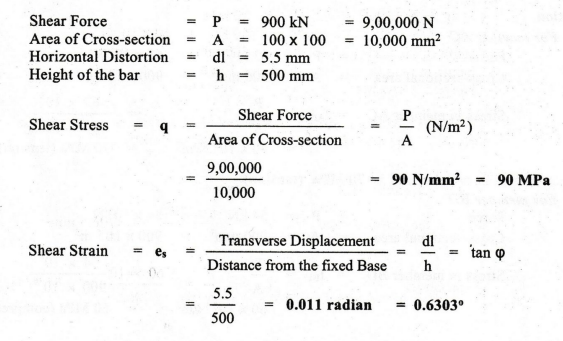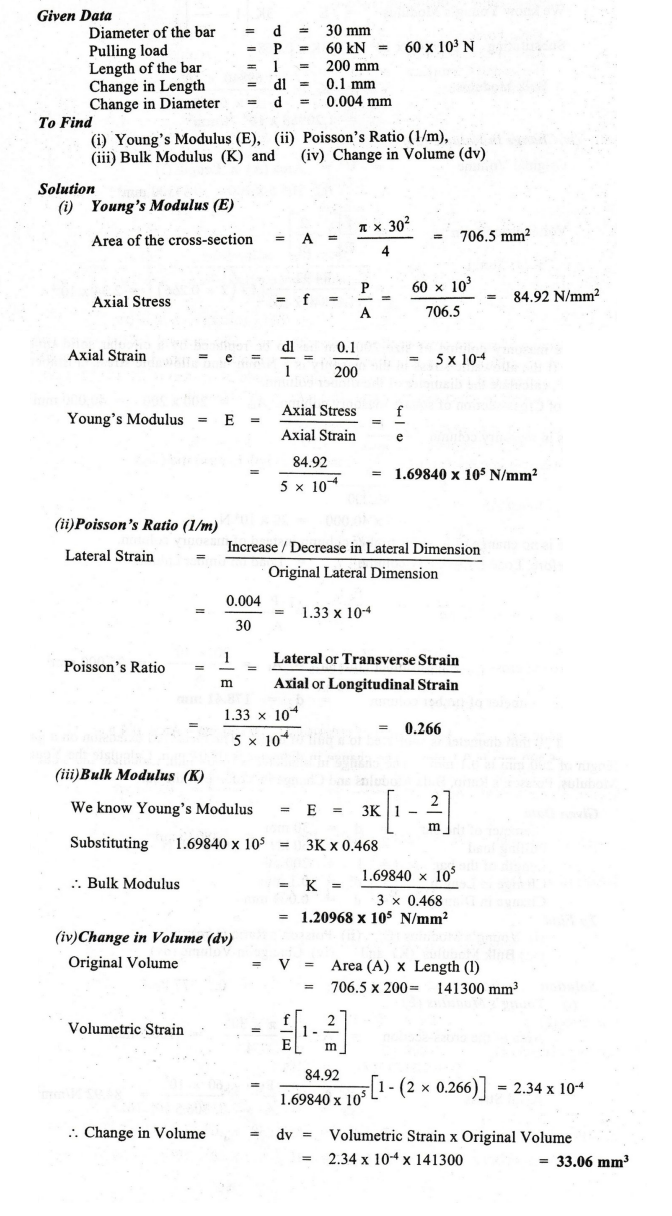Basic Civil & Mechanical Engineering: UNIT I: a. Overview of civil engineering
Question Bank: Important Long Qestions
Basic Civil & Mechanical Engineering: UNIT I: a. Overview of civil engineering
Basic Civil & Mechanical Engineering : Chapter - 1 : Overview of civil engineering : I. Answer the following
QUESTION
BANK
INCLUDES QUESTIONS FROM THE LATEST QUESTION PAPERS OF:
✓
Anna University (AU)
✓
Unitary Universities
✓
Autonomous Institutions
Chapter 1
OVERVIEW
OF CIVIL ENGINEERING
I. Answer the following:
1.
Brief on the specialized sub-disciplines in civil engineering.
2.
Give an overview of the contributions of a civil engineer to the welfare of the
society.
3.
Discuss the classification of external forces acting on a structure. Give
examples.
4.
Explain the basic types of stress and strain with necessary equations.
5.
Draw the stress-strain curve of mild steel. Explain the salient points on it.
6.
A member AC of a truss carries a tensile force of 63 kN and a member BD carries
a compressive force of 54 kN. The cross sectional area of each member is 900
mm. Calculate the stresses in the members.
Solution
For member AC

7.
A hollow steel column carries a load of 1200 kN. Compute the external diameter
of the column if the internal diameter is 150 mm and the ultimate stress is 450
N/mm2. Adopt a factor of safety of 4.
Solution

8.
A vertical square bar of length 500 mm and size 100 mm x 100 mm is fixed at its
base and free at its top. A horizontal force of 900 kN is acting at its top.
This force causes a horizontal distortion of 5.5 mm at top. Determine the shear
stress in MPA and shear strain in terms of angle of distortion (radian).

9.
A square masonry column of size 200 mm has to be replaced by a circular solid
timber column. If the allowable stress in the masonry is 5 N/mm2 and allowable
stress in timber is 8 N/mm2, calculate the diameter of the timber column.

10.
A bar of 30 mm diameter is subjected to a pull of 60 kN. The measured extension
on a gauge length of 200 mm is 0.1 mm. The change in diameter is 0.004 mm.
Calculate the Young's Modulus, Poisson's Ratio, Bulk Modulus and Change in
Volume of the bar.

11.
A R.C.C. Column of square cross-section of size 500 mm x 500 mm and 3.3 meters
height carries a load of 1000 kN. It is reinforced with 4 steel bars of 25 mm
diameter. Young's Modulus of concrete is 0.14 x 105 N/mm2 and Young's Modulus
of steel is 2.1 x 105 N/mm2. Compute the stresses to which concrete and steel
bars are subjected to

12.
Explain the basic types of stress and strain acting in structures.
13.
Explain stress – strain diagram for mild steel and the properties that can be
obtained.
14. Describe how site preparation is done
before the actual construction of the building.
15. Brief on the activities carried out as
part of earthwork.
16. Brief on the types of temporary woks used
in construction.
17.
Classify arches according to their geometry with suitable illustrations.
18. Enumerate the materials used for painting
of buildings.
19.
Mention any four miscellaneous works involved in building construction.
20. Brief on the advantages and disadvantages
of structural construction.
21.
Describe the contributions of steel structures in the development of smart cities.
22. Explain the purpose of subsurface exploration.
23.
Describe the following aspects: Soil deposits, Soil compaction and
Compressibility
24. Describe the following aspects: Stresses
in soil, Shear strength and Slope stability
25.
Explain hydrologic cycle with a schematic sketch.
26.
Discuss the fundamental aspects of environmental engineering.
27. Describe the methods adopted for
management of water resources.
28. What is subsurface? Explain the various
forms of surface water.
29.
Describe the classification of roads.
30. Illustrate and explain the different types
of road signs used in transportation engineering?
31.
Highlight the significance of road transportation.
32.
Describe the cross-sectional details of road with suitable illustrations.
Basic Civil & Mechanical Engineering: UNIT I: a. Overview of civil engineering : Tag: : Basic Civil & Mechanical Engineering: UNIT I: a. Overview of civil engineering - Question Bank: Important Long Qestions
Related Topics
Related Subjects
Basic Civil and Mechanical Engineering
BE3255 2nd Semester 2021 Regulation | 2nd Semester EEE Dept 2021 Regulation
